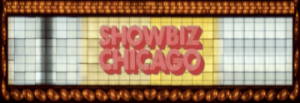MCA Chicago Debuts New Visual Identity

 The Museum of Contemporary Art Chicago announces the launch of its new visual identity, developed by internationally renowned design studio Mevis & Van Deursen (MVD).The design includes the MCA’s typeface and logo, and is reflected in the publications, signage, collateral, and redesigned website at mcachicago.org, all inspired by the underlying grid motif that is an icon of the MCA museum. MCA Chief Content Officer Susan Chun and Design Director Dylan Fracareta are responsible for the translation and implementation of the MVD design. The new visual identity will be rolled out across the MCA’s print, digital, and new media assets beginning in November 2015.
The Museum of Contemporary Art Chicago announces the launch of its new visual identity, developed by internationally renowned design studio Mevis & Van Deursen (MVD).The design includes the MCA’s typeface and logo, and is reflected in the publications, signage, collateral, and redesigned website at mcachicago.org, all inspired by the underlying grid motif that is an icon of the MCA museum. MCA Chief Content Officer Susan Chun and Design Director Dylan Fracareta are responsible for the translation and implementation of the MVD design. The new visual identity will be rolled out across the MCA’s print, digital, and new media assets beginning in November 2015.
Known for integrating the local culture and history of their museum clients into their creative work, Armand Mevis and Linda Van Deursen used the concept of a grid as the central principle in the new design and typeface. Dylan Fracareta says, “With the grid being scalable and flexible, it can evolve and change over time, and forms a welcoming and accessible field on which to tell the multidisciplinary stories about contemporary art and artists.”
The new typeface is constructed of combined squares that create each distinctive letterform. The more squares, the smoother and more refined the letter. There are six defined units, each with their own personality, that provide an essential liveliness and flexibility. The palette is predominantly black and white, with accents and highlights in blue and yellow that play off each other.
The MCA’s newly relaunched website (mcachicago.org) presents a bold and dynamic platform that showcases the MCA’s rich content, interweaving past, present, and future programs. Susan Chun says, “We are launching a new version of our website that we will continue to grow and refine. The new site makes public the creative process not just of artists, in keeping with our vision of being “artist-activated,” but also our collaborators and staff. Our creative team sees the site as an opportunity to engage online visitors in discussion, much as we do onsite.”
The new website will be an ongoing resource of art history in the making. The exhibition pages provide rich connections between the exhibition, programs, collections, online resources, and store items, as well as floorplans, installation photos, and downloadable interpretive content. This is enhanced by more movement, animation, and sound, which are important elements of the language of web design and contemporary culture. The Collection section of the website presents the MCA’s collection online for the first time and will profile a new artwork every month.
Several new initiatives on the website forward the MCA’s commitment to accessibility. Visitors with screen-readers can use a keyboard to navigate the site, make use of audio and video, and hear detailed descriptions of images. Sina Bahram, President of Prime Access Consulting and a leading specialist on accessibility says, “The MCA website is on the forefront of art museums offering digital assets to visitors with sight impairment. In terms of universal design, the team’s unparalleled commitment exceeds the suggested standards with many new initiatives planned for the future.” As a core component of the site’s focus on accessibility, the MCA team pioneered an open source platform called Coyote, to create and manage visual descriptions of images for the visually impaired. Coyote will be made available to museums and institutions worldwide to use with their digital interfaces.
